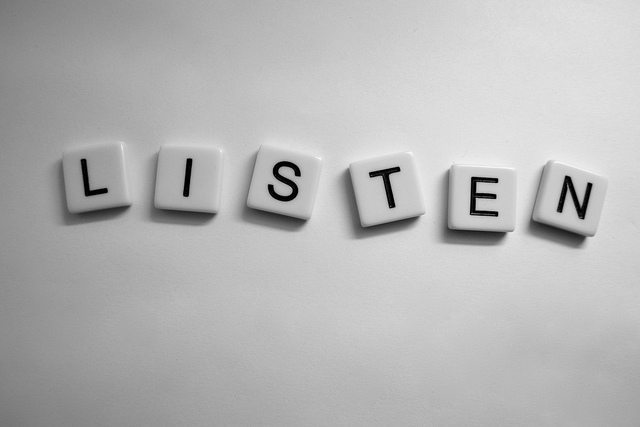- Audio self evaluations
- Listening Journals
- Teaching Listening: RA episodes: Useful tags, Trigger warnings
- Teaching Listening: ACTFL 2014 Presentation
- Teaching Listening: Shifting the Practice
- Teaching Listening: The Lesson Plan
- Teaching Listening: Listening Strategies
- Teaching Listening: Theory and Practice
- Teaching Listening: a series
This semester I have had the great good fortune to do a private reading with two students who are interested in teaching listening in an upper level college classroom. Both students have experience teaching and developing curriculum in Spanish in our local schools via the SITES program and were eager to expand their knowledge to developing curriculum at the college level.
Together we have spent the last 10 weeks or so looking at episodes of Radio Ambulante that they felt would resonate with fellow students at a 300 level of Spanish (so, third year college level). I have learned so much from them and together we have come up with some really great ideas to incorporate RAs authentic audio while developing listening strategies.
Shameless self-promotion: Next week I am going to be presenting some of our work in a session entitled “Using Radio Ambulante in the Spanish Language Classroom” at ACTFL in San Antonio…(Friday Nov 21, 2:30-3:30, Room 204B in the Convention Center). If you are at ACTFL and you want to use Radio Ambulante in your language class, please stop in. After the session I will post my notes etc here.
Some things my students have taught me: Students want more listening practice. They know they don’t do it well… in Spanish as well as English. We know we don’t provide enough opportunities for them to do it in a meaningful way in class. Listening is a skill that is overlooked and under-appreciated in many different contexts, not just a language class. And what my students and I discovered is the minute you start paying attention to how you listen in one context, you can’t help but start paying attention to it in others.
Listening is hard work. In any conversation, the listener is carrying 80% of the load: she is both processing what is being said by the other person and also preparing a response. And yet our emphasis in the classroom is always on the speaker.
David Nunan explains it like this:
Listening is the Cinderella skill is second language learning. All too often it has been overlooked by its elder sister, speaking. For most people being able to claim knowledge of a second language means being able to speak and write in that language. Listening and reading are therefore secondary skills –means to other ends, rather than ends in themselves.
Listening is crucial in the language classroom because it provides input for the learner. But if we don’t build in strategies to help our students understand that input, then learning doesn’t happen. Like other proficiencies…everyone is different and develops at their own pace. Plus…some listening “texts” are more challenging than others. We knew that whatever we created, it had to be flexible.
Our starting point was thinking about listening strategies that were not just exclusive to the language classroom. OUr feeling was that building listening skills is something that could benefit a learner in many ways, and should not be limited just to L2 learning. In fact, wouldn’t it be great is everyone took the time to learn how to listen better…. oh what a world this could be.
Back to reality: Below are some of the ideas we came up with but the list is by no means exhaustive. These strategies would work for language learners and just regular folk as well. (Feel free to suggest them to your chronically listening-averse friends and colleagues!)
I am putting them out here to get your feedback. What did we miss? If you have suggestions or additions…please add them in the comments section!
- Figure out what works for you and when it doesn’t: What distracts you when you listen? Where do you listen best? For example, what happens if you listen with your eyes closed? When you turn your back? What kinds of listening situations challenge you? Which ones do you think are easy? When do you feel your mind wandering? What do you do to bring it back?
- Create a listening journal: where one chronicles significant listening events…moments of success, moments of frustration, things that distract, things that help you listen better. This is intended to be private (i.e. not handed in to the teacher) and to be reviewed, by the student, during different points in the term. With listening we tend to remember our frustrations better than our successes, and a journal could help to remind us of both things.
- Speak less, listen more: even though we listen all the time, it doesn’t mean we do it well. Or enough. Make a point to listen a little more, don’t feel the need to always fill the silence, think about the voices and sounds you can hear more clearly when you choose to listen more. See what happens.
- Ask for help: Ask colleagues, friends, family members to call you out on your lack of listening. You may not realize that you tend to interrupt, or that you look at your phone, or fiddle with stuff…all things that pull you away from the hard work of paying attention and listening intently.
Up next: A lesson plan template we created in class to use Radio Ambulante episodes in the classroom.
Featured image: by “Listen” Steve Shorrock CC by-NC-SA 2.0
